How Environment Features Affect Children’s Emotions in Natural Playgrounds: A Context-Specific Case Study in China
Abstract
1. Introduction
1.1. Reconnecting Children with Nature for Mental Health and Well-Being
1.2. Natural Playgrounds as a Strategy to Restore Children’s Nature Engagement in Urban Contexts
1.3. Applying Affordances and Behavior Settings to Interpret Children’s Emotional Perception in Natural Playgrounds
1.4. Aims of This Study
2. Methodology
2.1. Study Area
2.2. Data Collection
2.2.1. Participant Recruitment
2.2.2. Assessment of Children’s Emotional Perception
2.2.3. Assessment of Environmental Features in the Playground
2.3. Data Analysis
2.3.1. Reliability and Validity Testing
2.3.2. Correlation Between Environmental Features and Emotional Perception
2.3.3. Variable Importance and Key Predictor Identification
2.3.4. Pathway Identification and Emotional Threshold Analysis
3. Results
3.1. Reliability and Validity Analysis
3.2. Descriptive Statistics
3.3. Correlations Between Environmental Features and Emotional Perception
3.4. Importance Ranking of Environment Features
3.5. Environmental Feature Combinations and Affective Perception
4. Discussion
4.1. Overview
4.2. Interpretation of Main Findings
4.2.1. Natural Elements as Triggers of Positive Emotional Perceptions
4.2.2. Differentiated Spatial Mechanisms Across Emotional Dimensions
4.2.3. Multidimensional Spatial Strategies for Emotionally Diverse Playgrounds
4.3. Contributions and Implications
4.4. Limitations and Future Opportunities
5. Conclusions
Author Contributions
Funding
Data Availability Statement
Acknowledgments
Conflicts of Interest
References
- United Nation. World Urbanization Prospects: The 2014 Revision, Highlights; Department of Economic and Social Affairs: New York, NY, USA, 2014. [Google Scholar]
- Taylor, A.F.; Kuo, F.E.; Sullivan, W.C. Coping with ADD: The surprising connection to green play settings. Environ. Behav. 2011, 33, 54–77. [Google Scholar] [CrossRef]
- McCrorie, P.; Olsen, J.R.; Caryl, F.M.; Nicholls, N.; Mitchell, R. Neighbourhood natural space and the narrowing of socioeconomic inequality in children’s social, emotional, and behavioural wellbeing. Wellbeing Space Soc. 2021, 2, 100051. [Google Scholar] [CrossRef] [PubMed]
- Flouri, E.; Midouhas, E.; Joshi, H. The role of urban neighbourhood green space in children’s emotional and behavioural resilience. J. Environ. Psychol. 2014, 40, 179–186. [Google Scholar] [CrossRef]
- Woolley, H. Where do the children play? How policies can influence practice. Proc. Inst. Civ. Eng. Munic. Eng. 2007, 160, 89–95. [Google Scholar] [CrossRef]
- Dewey, J.; Dewey, E. Schools of Tomorrow; E. P. Dutton: New York, NY, USA, 1915. [Google Scholar]
- Dewey, J. Democracy and Education: An Introduction to the Philosophy of Education; Macmillan: New York, NY, USA, 1916. [Google Scholar]
- Fjørtoft, I.; Sageie, J. The natural environment as a playground for children: Landscape description and analyses of a natural playscape. Landsc. Urban Plan. 2000, 48, 83–97. [Google Scholar] [CrossRef]
- Czalczynska-Podolska, M. The impact of playground spatial features on children’s play and activity forms: An evaluation of contemporary playgrounds’ play and social value. J. Environ. Psychol. 2014, 38, 132–142. [Google Scholar] [CrossRef]
- Bikomeye, J.C.; Balza, J.; Beyer, K.M. The impact of schoolyard greening on children’s physical activity and socioemotional health: A systematic review of experimental studies. Int. J. Environ. Res. Public Health 2021, 18, 535. [Google Scholar] [CrossRef] [PubMed]
- Keniger, L.E.; Gaston, K.J.; Irvine, K.N.; Fuller, R.A. What are the benefits of interacting with nature? Int. J. Environ. Res. Public Health 2013, 10, 913–935. [Google Scholar] [CrossRef] [PubMed]
- Gibson, J.J. The Ecological Approach to Visual Perception; Lawrence Erlbaum Associates: Hillsdale, NJ, USA, 1979. [Google Scholar]
- Barker, R.G. Ecological Psychology: Concepts and Methods for Studying the Environment of Human Behavior; Stanford University Press: Palo Alto, CA, USA, 1968. [Google Scholar]
- Heft, H. Affordances of children’s environments: A functional approach to environmental description. Child. Environ. Q. 1988, 5, 29–37. [Google Scholar]
- Kyttä, M. Affordances of children’s environments in the context of cities, small towns, suburbs and rural villages in Finland and Belarus. J. Environ. Psychol. 2002, 22, 109–123. [Google Scholar] [CrossRef]
- Sandseter, H.E.B. Categorising risky play: How can we identify risk-taking in children’s play? Eur. Early Child. Educ. Res. J. 2007, 15, 237–252. [Google Scholar] [CrossRef]
- Hussein, H. Therapeutic Intervention: Using Sensory Gardens to Enhance the Quality of Life for Children with Special Needs. Ph.D. Thesis, University of Edinburgh, Edinburgh, UK, 2009; pp. 57–60. [Google Scholar]
- Cosco, N.G.; Moore, R.C.; Islam, M.Z. Behavior mapping: A method for linking preschool physical activity and outdoor design. Med. Sci. Sports Exerc. 2010, 42, 513–519. [Google Scholar] [CrossRef] [PubMed]
- Mehrabian, A.; Russell, J.A. An Approach to Environmental Psychology; MIT Press: Cambridge, MA, USA, 1974. [Google Scholar]
- Bradley, M.M.; Lang, P.J. Measuring emotion: The self-assessment manikin and the semantic differential. J. Behav. Ther. Exp. Psychiatry 1994, 25, 49–59. [Google Scholar] [CrossRef] [PubMed]
- McManis, M.H.; Bradley, M.M.; Berg, W.K.; Cuthbert, B.N.; Lang, P.J. Emotional reactions in children: Verbal, physiological, and behavioral responses to affective pictures. Psychophysiology 2001, 38, 222–231. [Google Scholar] [CrossRef] [PubMed]
- Mavoa, S.; Lucassen, M.; Denny, S.; Utter, J.; Clark, T.; Smith, M. Natural neighbourhood environments and the emotional health of urban New Zealand adolescents. Landsc. Urban Plan. 2019, 191, 103638. [Google Scholar] [CrossRef]
- Zajonc, R.B. Feeling and thinking: Preferences need no inferences. Am. Psychol. 1980, 35, 151–175. [Google Scholar] [CrossRef]
- Veitch, J.; Bagley, S.; Ball, K.; Salmon, J. Where do children usually play? A qualitative study of parents’ perceptions of influences on children’s active free-play. Health Place 2006, 12, 383–393. [Google Scholar] [CrossRef] [PubMed]
- Bandura, A. Self-Efficacy: The Exercise of Control; W. H. Freeman and Company: New York, NY, USA, 1997. [Google Scholar]
- Lester, S.; Russell, W. Play for a Change: Play, Policy and Practice: A Review of Contemporary Perspectives; National Children’s Bureau: London, UK, 2008. [Google Scholar]
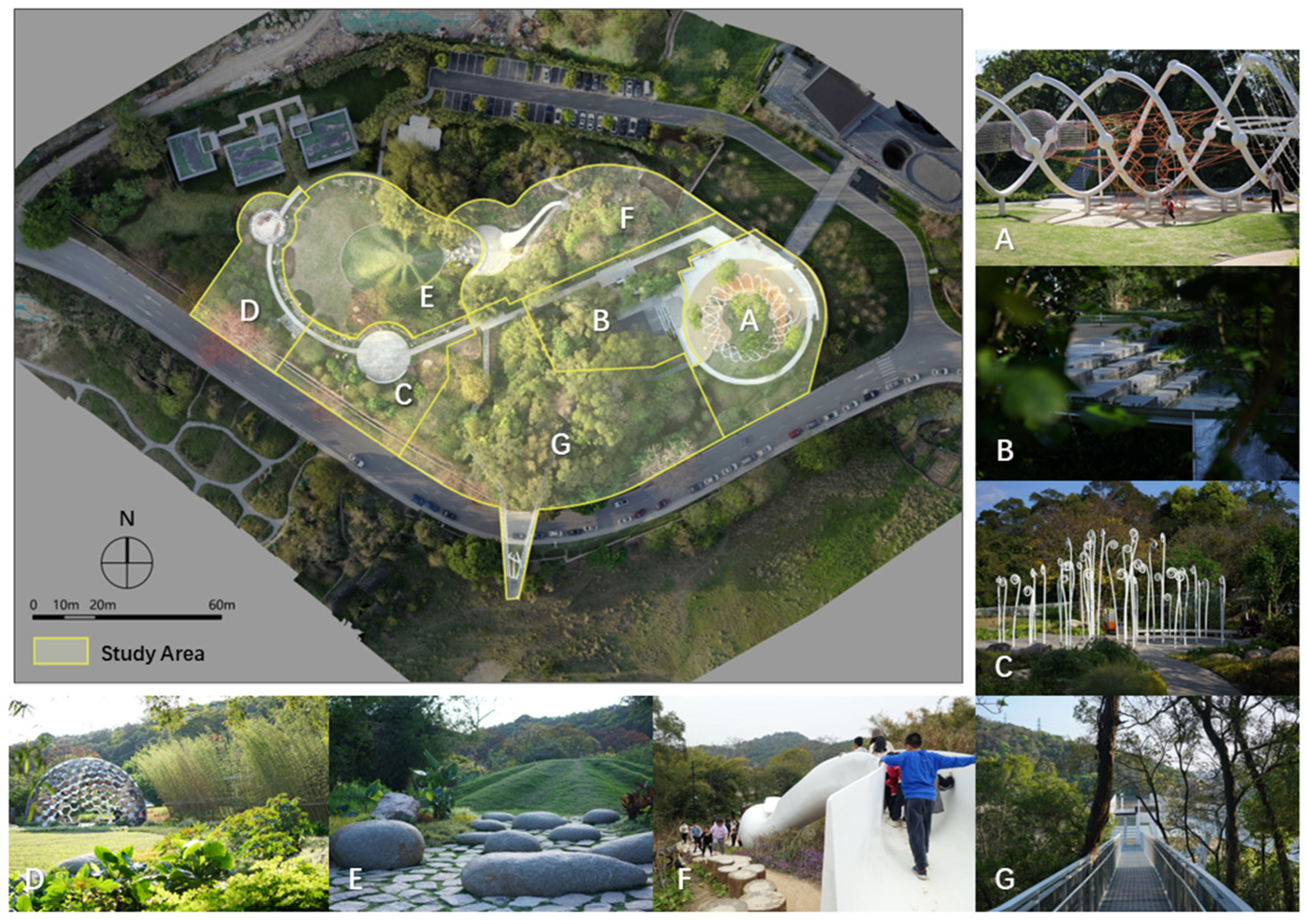
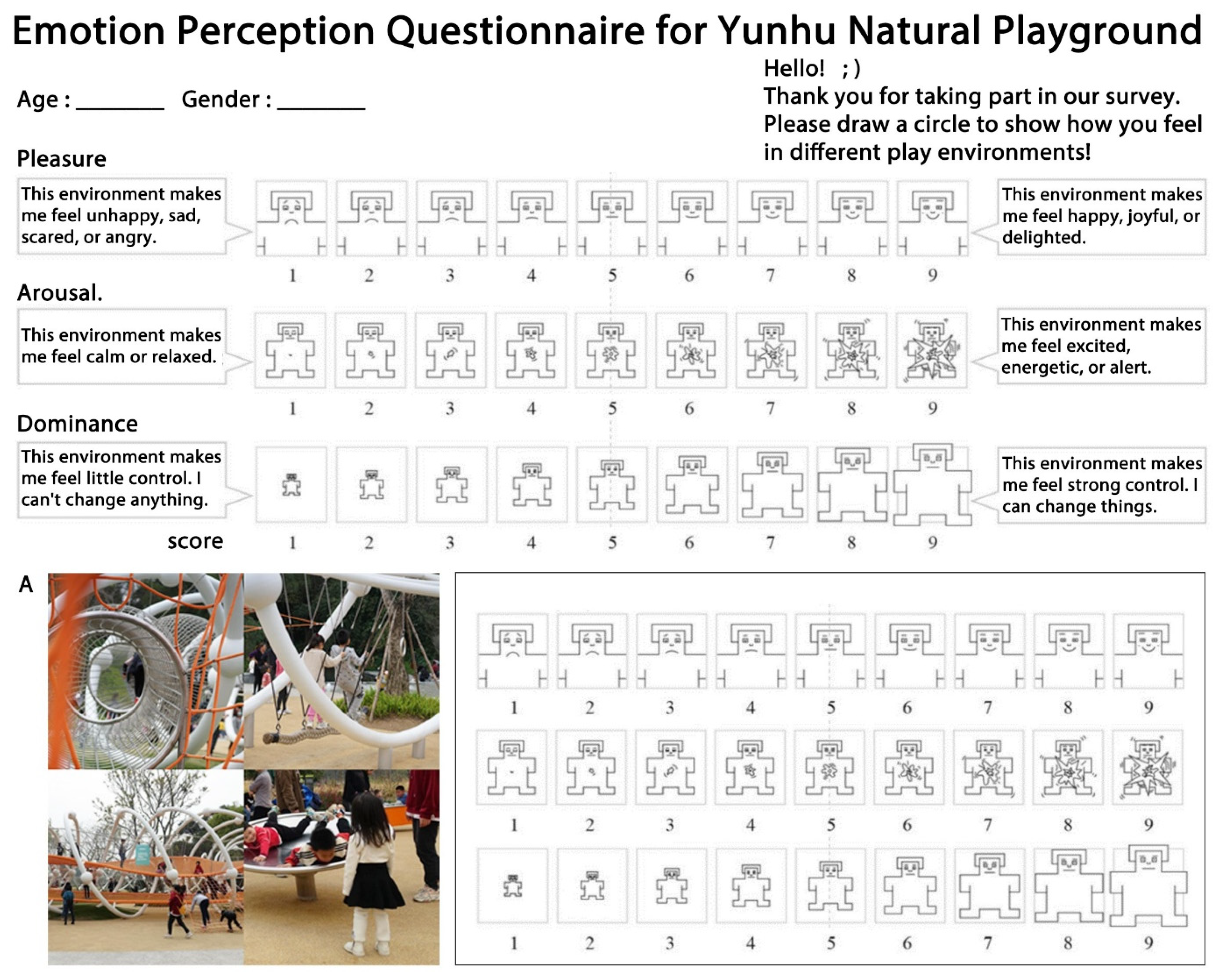
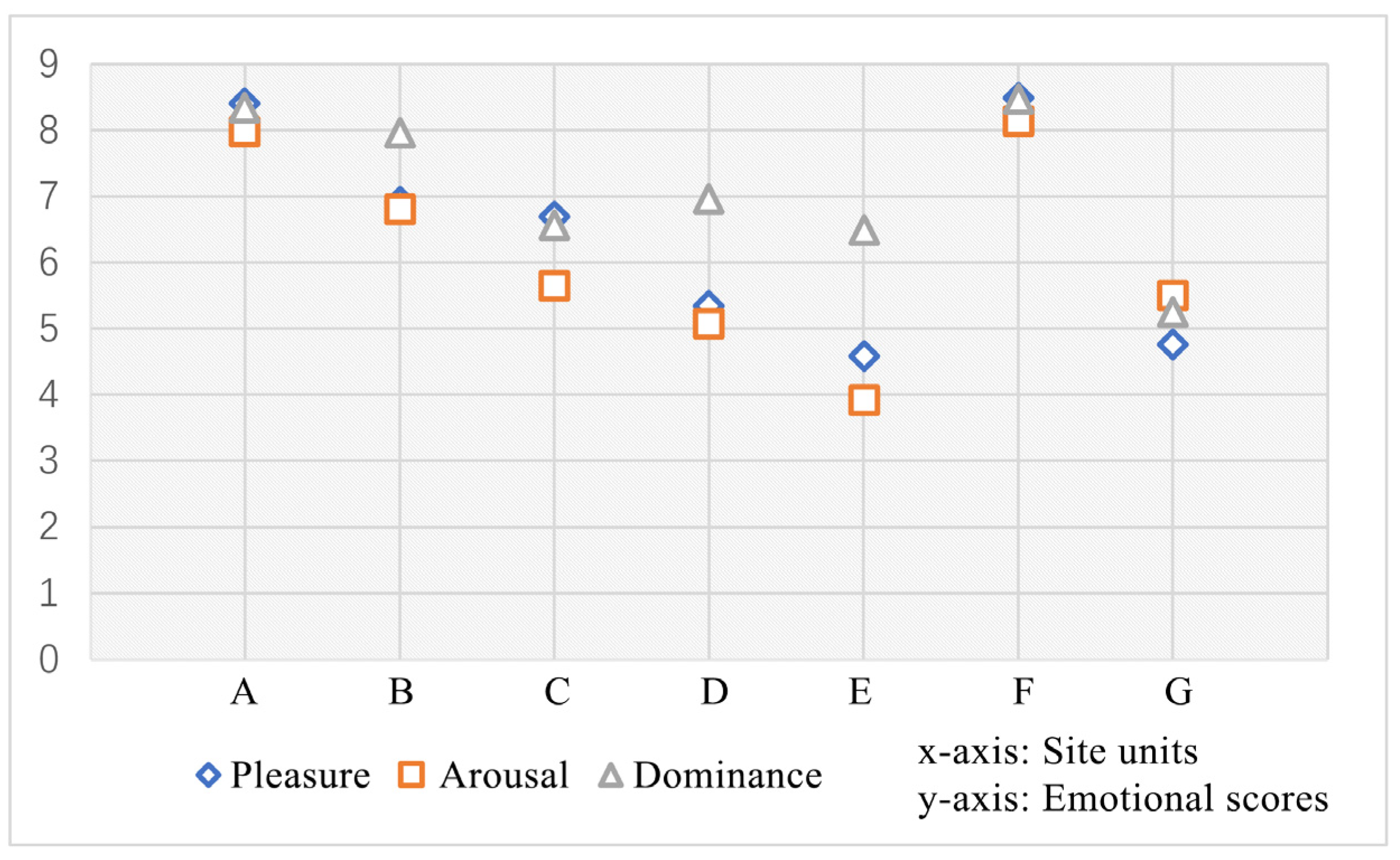

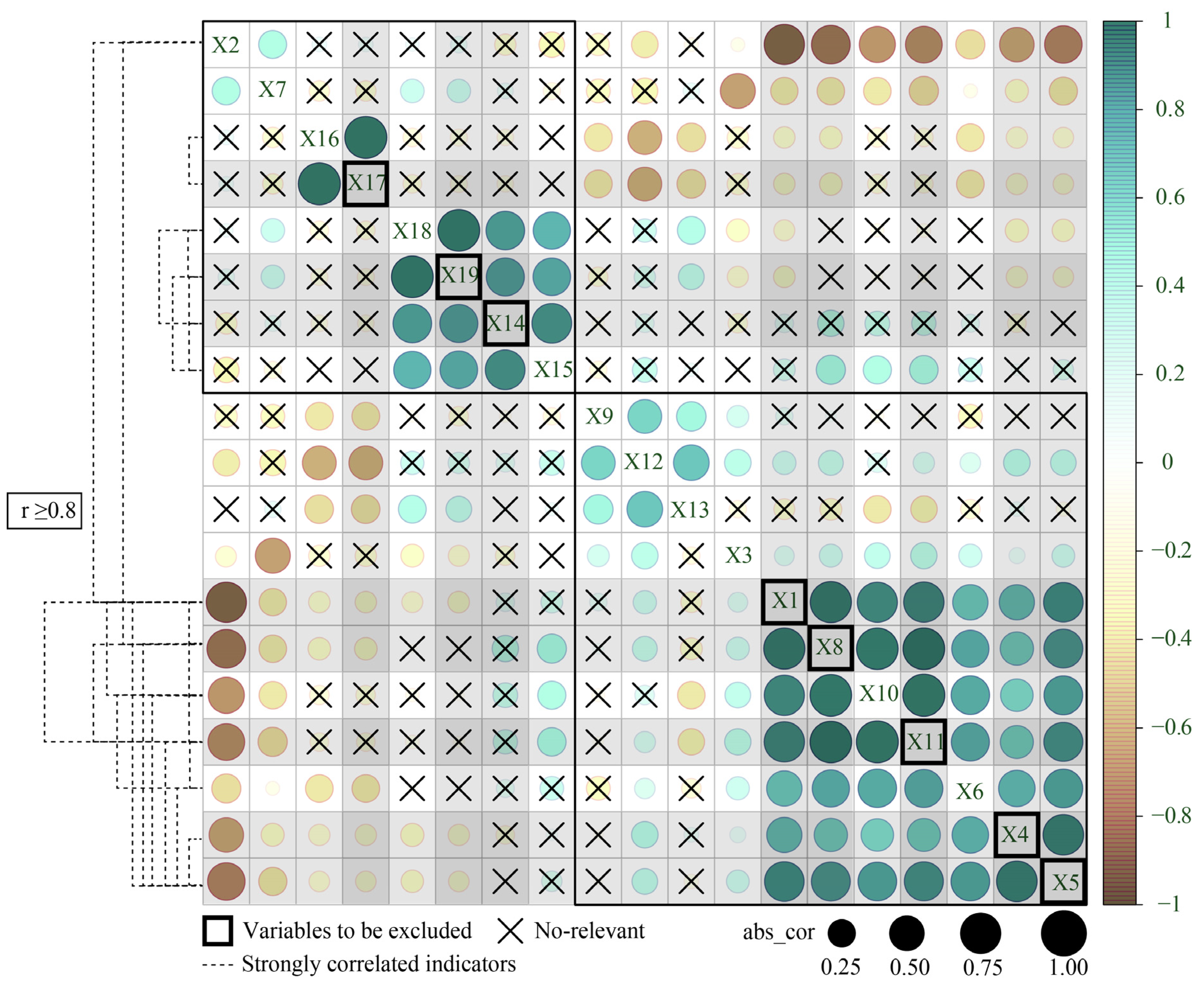

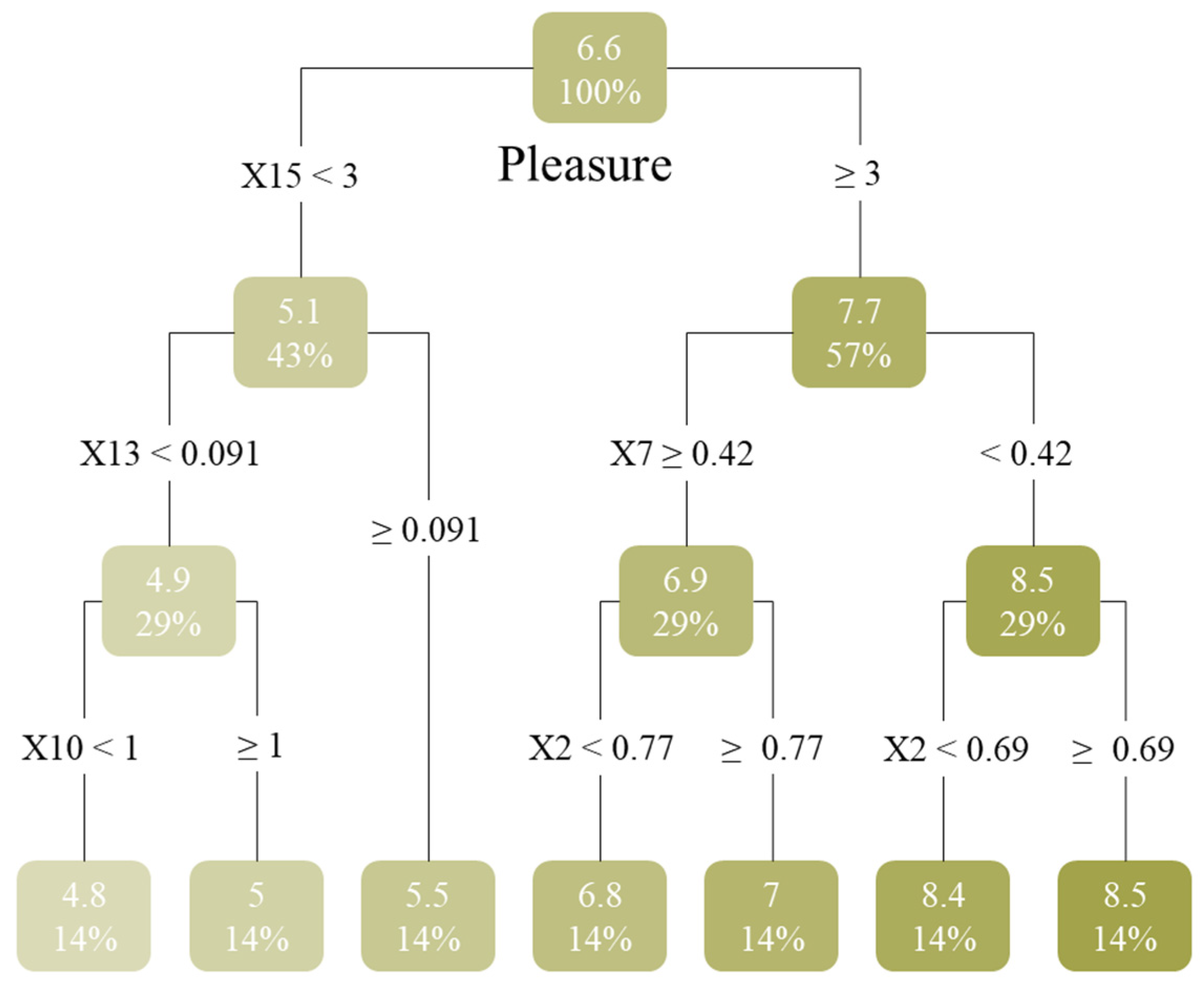
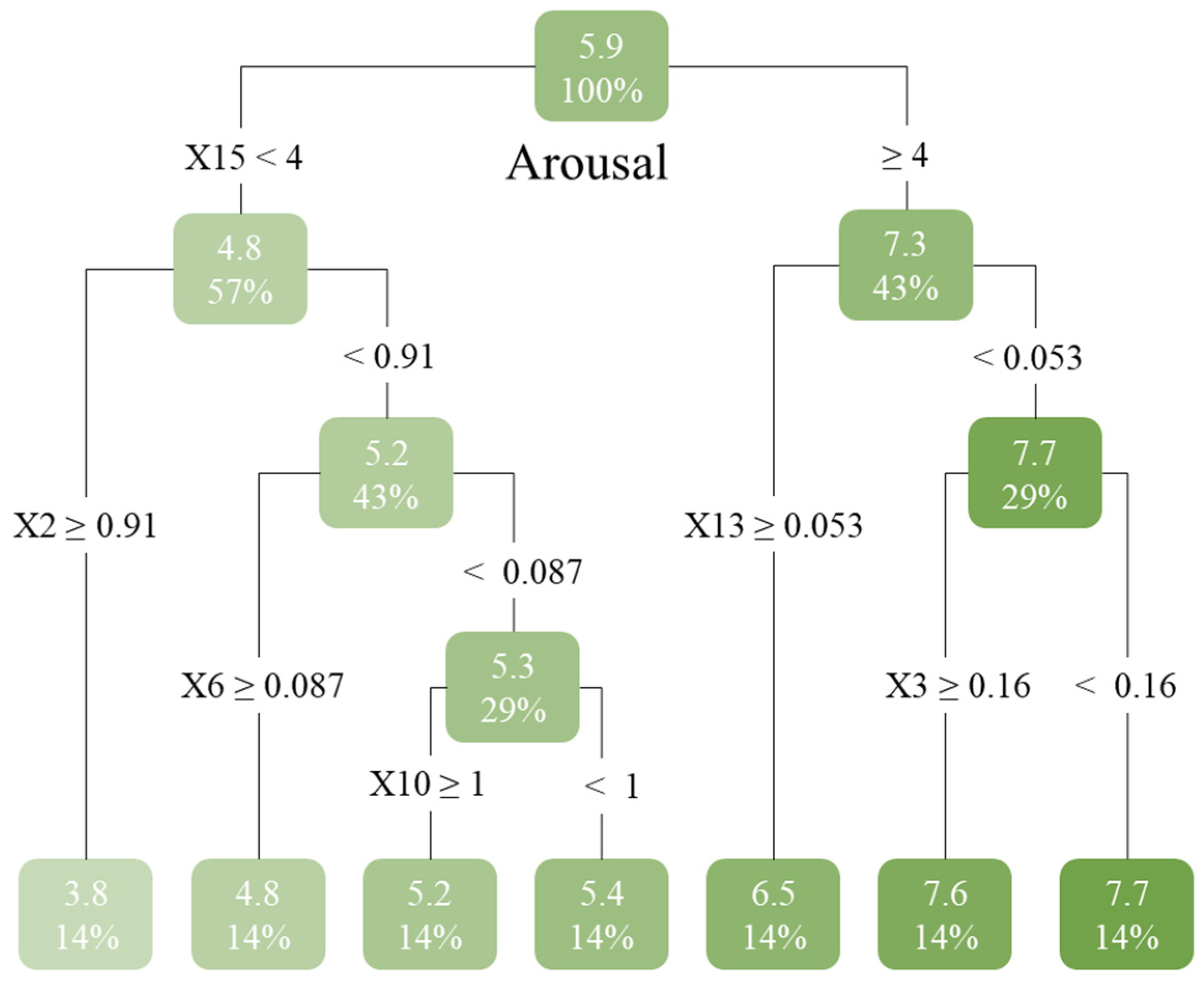
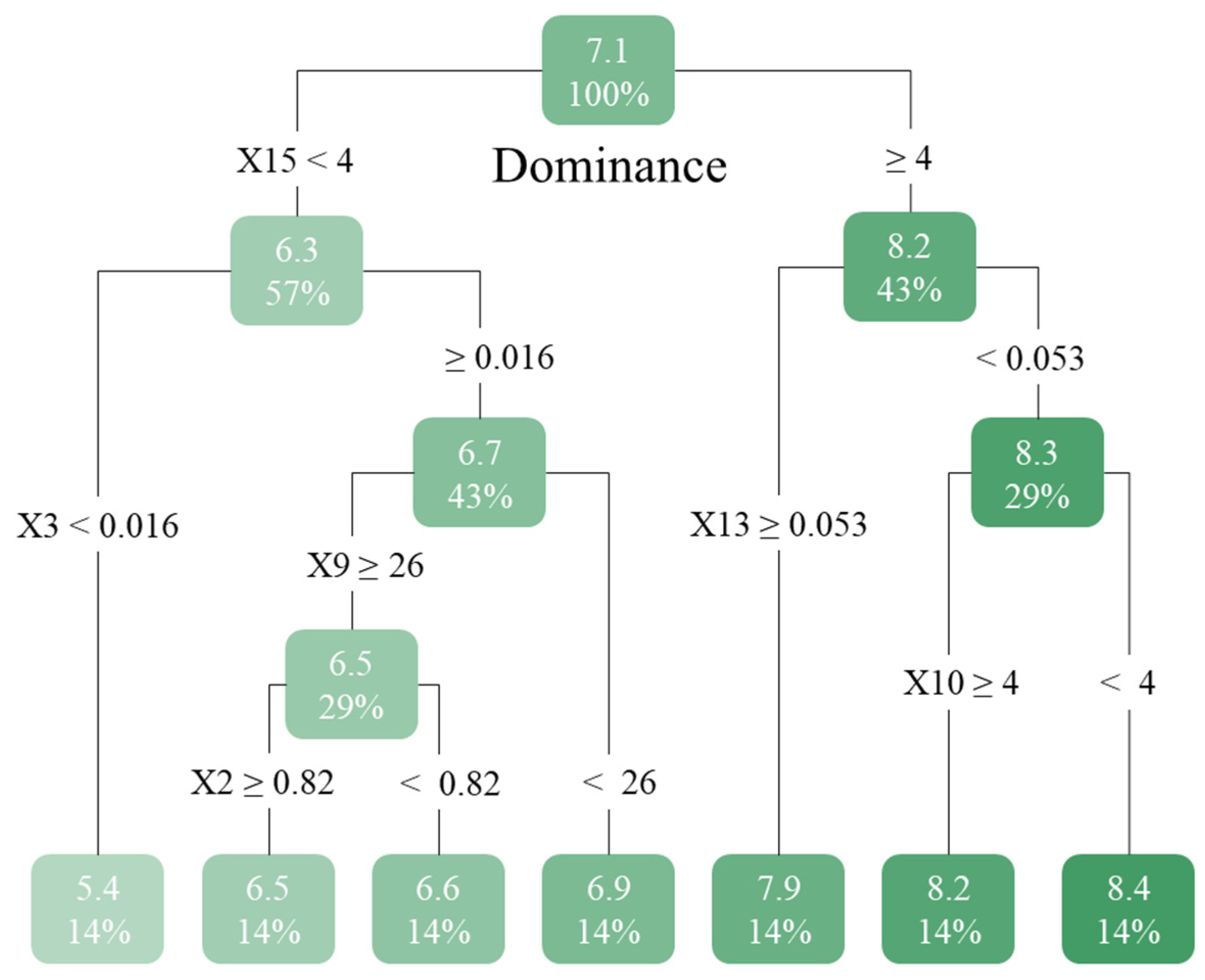

| Affordance-Based Typology | Environmental Feature Indicators | |
|---|---|---|
| Flat and sloped surfaces | Artificial features | X1—proportion of hard paving (%) |
| Natural features | X2—proportion of vegetation coverage (%) | |
| X3—proportion of accessible lawn (%) | ||
| Shelter | Artificial features | X4—types of artificial shelters |
| X5—count of artificial shelters | ||
| X6—proportion of usable shaded area (%) | ||
| Natural features | X7—canopy closure (%) | |
| Attached objects | Artificial features | X8—types of fixed play equipment |
| X9—count of fixed play equipment | ||
| Non-rigid, attached objects | Artificial features | X10—types of movable play equipment |
| X11—count of movable play equipment | ||
| Graspable/detached objects | Artificial features | X12—types of loose ground |
| X13—proportion of loose ground (%) | ||
| Natural features | X14—types of flowering/fruiting plants | |
| X15—types of usable seasonal flowering/fruiting plant | ||
| Moldable material | Natural features | X16—types of malleable paving |
| X17—proportion of malleable paving (%) | ||
| Water | Natural features | X18—types of waterscape |
| X19—proportion of waterscape (%) |
Disclaimer/Publisher’s Note: The statements, opinions and data contained in all publications are solely those of the individual author(s) and contributor(s) and not of MDPI and/or the editor(s). MDPI and/or the editor(s) disclaim responsibility for any injury to people or property resulting from any ideas, methods, instructions or products referred to in the content. |
© 2025 by the authors. Licensee MDPI, Basel, Switzerland. This article is an open access article distributed under the terms and conditions of the Creative Commons Attribution (CC BY) license (https://creativecommons.org/licenses/by/4.0/).
Share and Cite
Lin, Z.; Yang, F.; Yang, D. How Environment Features Affect Children’s Emotions in Natural Playgrounds: A Context-Specific Case Study in China. Buildings 2025, 15, 3245. https://doi.org/10.3390/buildings15173245
Lin Z, Yang F, Yang D. How Environment Features Affect Children’s Emotions in Natural Playgrounds: A Context-Specific Case Study in China. Buildings. 2025; 15(17):3245. https://doi.org/10.3390/buildings15173245
Chicago/Turabian StyleLin, Zhishan, Fei Yang, and Donghui Yang. 2025. "How Environment Features Affect Children’s Emotions in Natural Playgrounds: A Context-Specific Case Study in China" Buildings 15, no. 17: 3245. https://doi.org/10.3390/buildings15173245
APA StyleLin, Z., Yang, F., & Yang, D. (2025). How Environment Features Affect Children’s Emotions in Natural Playgrounds: A Context-Specific Case Study in China. Buildings, 15(17), 3245. https://doi.org/10.3390/buildings15173245




